Decodon verticillatus
Decodon verticillatus swamp loosestrife
The stems of this native member of the loostrife family are long, and often reclining or arching and have 4-6 sides. The branches are often intertwined and the plant can take either form of an herb or a small shrub (woody base). The flowers are deep pink or lavender and occur in tufts in the axils of the upper leaves. Each individual flower is bell-shaped and has five wedge-shaped petals and about ½ to 1 inch long. The calyx is cup-shaped. There are 8-10 long pink stamens with white tips that protrude beyond the petals.
The fruit is a round capsule. The leaves are lance-shaped (resembling willow leaves) and either paired or in 3’s or 4’s. The leaves are 2-6 inches long. The plant grows 2-8 feet tall in swamps, bogs and the shallow water of wetlands. Often the species forms large clumps or colonies that can be attractive. When parts of the stem are underwater they may develop air-filled buoyant, spongy tissue.
The blooming period is July and August. It is also known by the common name water-willow. The invasive purple loostrife belongs to a different genus (Lythrum).
Habitat & Range
Occasional in bogs, swamps, and lake margins in shallow water.
Mostly found in the east and northwest.
| EMP: | OBL |
|---|---|
| NCNE: | OBL |
Phenology
Flowers July through August.
Plant Codes
S-rank: No rank
G-rank: G5 (Secure)
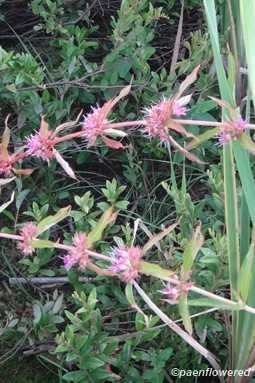
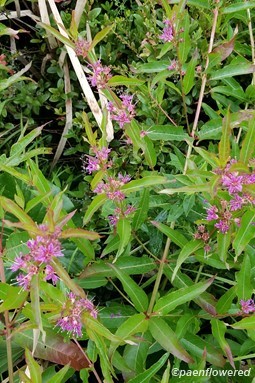
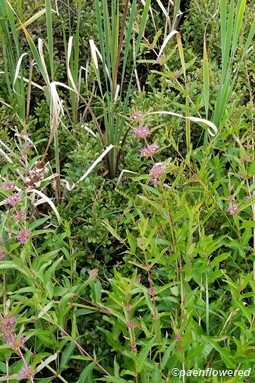


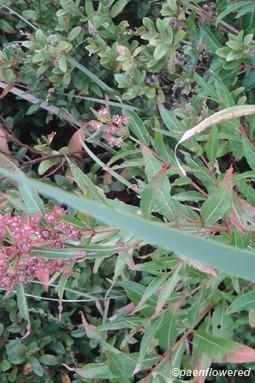
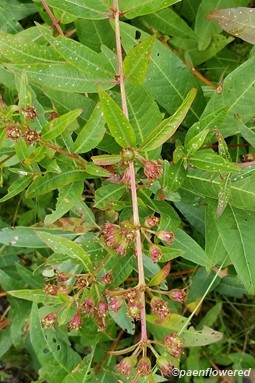

Comments
Have you spotted this plant in your area? We'd love to hear about your experience! Share your comments or questions about the plant below. Comments are moderated before posting.